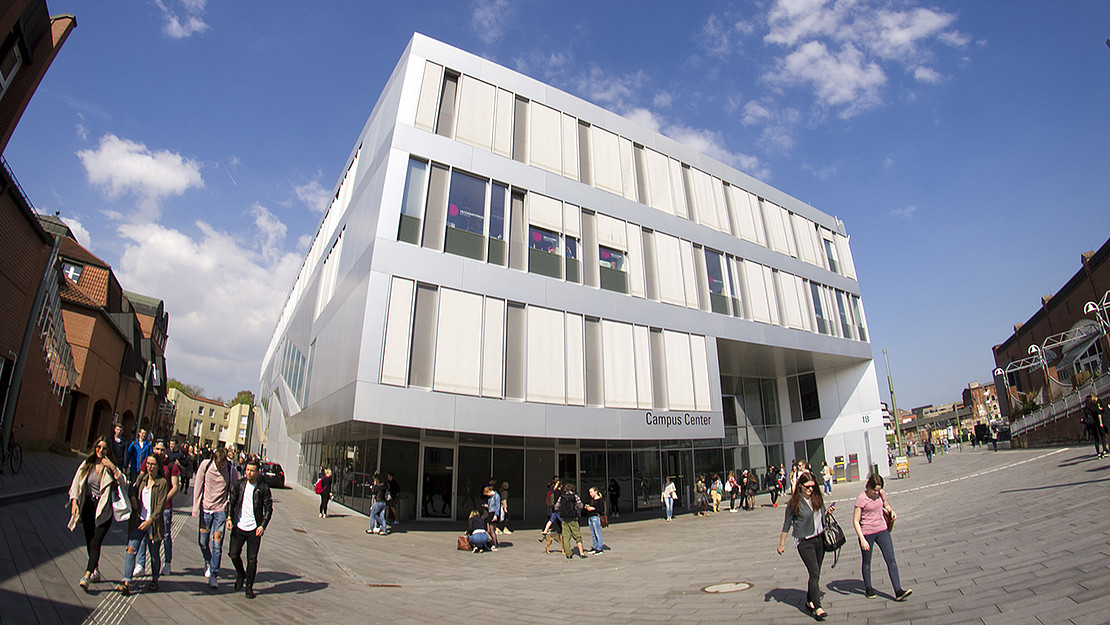
Uni-Kassel Symposium: light mobility as a building block for the transport turnaround
659 days ago
4 minutes
Every car journey has a green alternative – this is the thesis of the Kassel research project “Mobility with a human touch – light mobility for environmental and climate protection, urban and quality of life”. As part of the research, the university organized a three-day symposium. LEVA-EU Manager Annick Roetynck was one of the participants.
The project at the Department of Transport Planning and Systems, headed by Prof. Dr.-Ing. Carsten Sommer, aims to define and establish the term “FeinMobilität” as an important component of the transport turnaround. Existing and upcoming vehicle concepts such as micromobiles, cycles, velomobiles, cabin scooters, minicars, … are analysed as an alternative to the conventional, ever larger and heavier motor vehicle.
The German term “Feinmobilität” was not yet wholeheartedly accepted during the symposium. It is clear however that the wide variety of light, electrical vehicles in and outside the L-category need their own name. Without that proper name, it is difficult to communicate about this particular group of vehicles.
As part of the project, a symposium with more than 60 experts took place from 26 to 28 September at the University in Kassel. The participants came from the production and development of fine mobility vehicles, from relevant industries and associations, research, traffic law, infrastructure planning and the communications industry.
The symposium consisted of discussion rounds on topics such as legislation, infrastructure, communication, …, in which experts made statements which were followed by further discussions. Among the presenters were Masha Brost, who presented the LEV4Climate study, commissioned by LEVA-EU, whilst Annick Roetynck explained EU legislation on light vehicles. The event concluded with a panel discussion on the opportunities and obstacles for fine mobility.

Below is an anthology of some striking statements/conclusions formulated in the symposium. In the discussions there was great unanimity among the participants, despite their very different backgrounds, about the fact that automobility is placing a heavy burden on our society, not only through emissions but also through the increasing size and ditto weight of vehicles. The urgent need for smaller, lighter vehicles ran like a thread through this three-day event.
- All mobility damages society, so it comes down to minimising that damage.
- It is important to calculate what mobility in its current form costs society.
- Motorists perceive speed limits as infringing on their freedom, but those limits secure the freedom of all other road users.
- Wherever a car parks, a child can no longer play.
- Measures to reduce emissions from motorised traffic alone are not enough and sometimes backfire. European legislation on CO2 emissions from motorised vehicles does not include measures to reduce vehicle weight. Electric cars are granted zero emissions. Consequently, you can easily produce heavier electric cars and be rewarded with zero emissions.
- In Germany, electric cars enjoy subsidies of more than €9,000. Nothing is available for microcars in L7 or other light vehicles, in L5 and L6. Thus, heavy mobility is subsidised on the basis of ecological arguments while light mobility is being ignored.
- The European Union prioritises reducing emissions from cars on the road in the belief that this is the fastest path to decarbonisation by 2030. Emission reduction through vehicle weight reduction is not on the agenda.
- Mobility policies should be based on both environmental and economic principles. Economic here means the pursuit of maximum prosperity using as few scarce resources as possible.
- Weight-regulating measures are essential to reduce the damage of today’s mobility to society.
- European type approval is so complex that large manufacturers are not interested in entering the European Union market with new L-category vehicles including minicars. They have no guarantee of large sales and therefore prefer going to the Asian market.
- Legislation becomes too complex by trying to fit all light vehicles into existing legislation.
- Light vehicles are extremely (strictly) regulated if you compare it to cars, for example.
- Parking policies should be adjusted with a view to discouraging large, heavy cars and encouraging small, light vehicles through pricing policies but also by providing fewer parking spaces.
- Light mobility does not exist in communication. Making light mobility visible is a first step in communication.
- Light vehicles are not visible in statistics.
- There is a research deficit. Science should raise its hand to indicate what needs to done to support light mobility.
Annick Roetynck
Annick is the Manager of LEVA-EU, with decades of experience in two-wheeled and light electric mobility.
Campaign success
Lorem ipsum dolor sit amet, consectetur adipisicing elit, sed do eiusmod tempor incididunt ut labore et dolore magna aliqua.
Member profile
Lorem ipsum dolor sit amet, consectetur adipisicing elit, sed do eiusmod tempor incididunt ut labore et dolore magna aliqua.